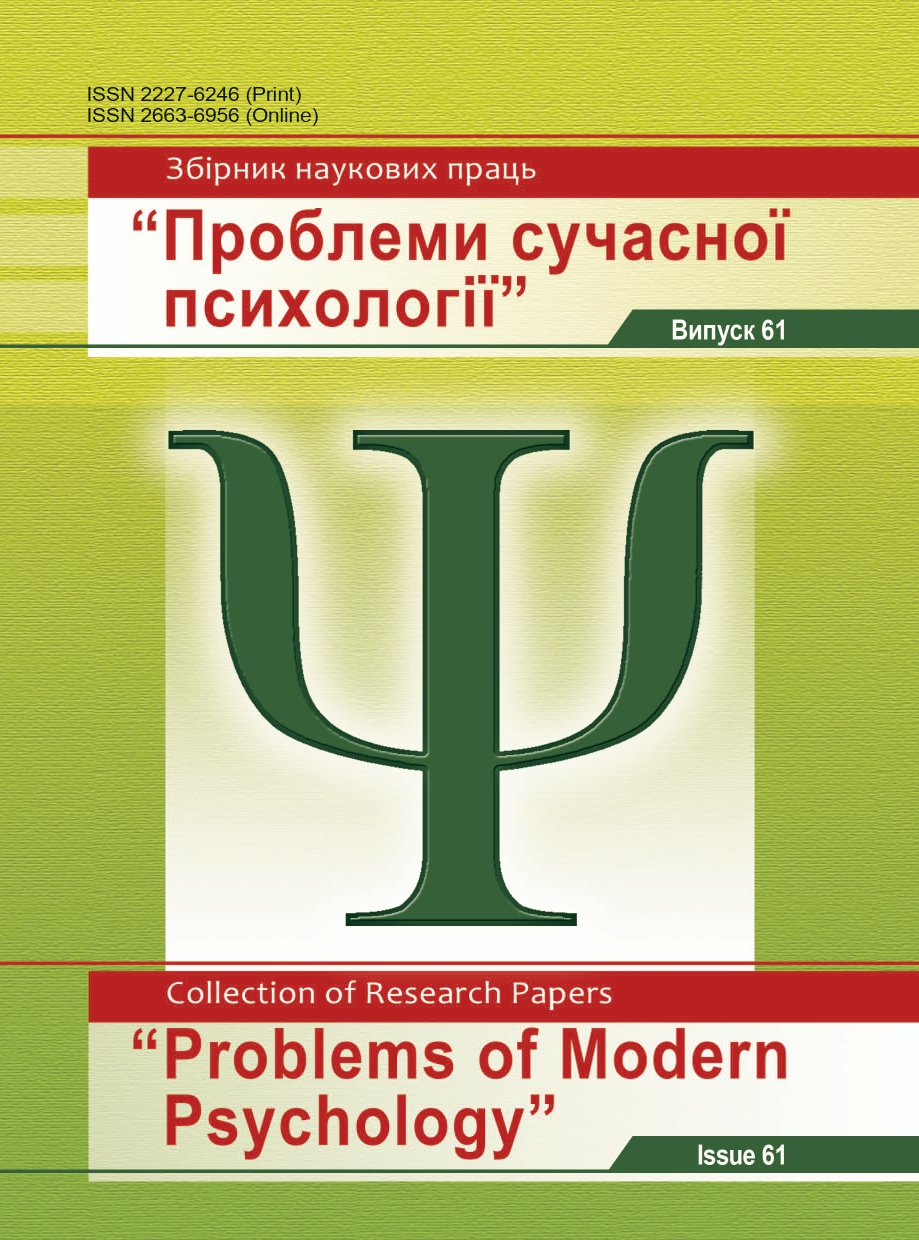Manager’s Professional Creativity as a Practice-Oriented Level of Performing Professional Activities
DOI:
https://doi.org/10.32626/2227-6246.2023-61.96-118Keywords:
professional creativity as a practice-oriented level, measurement of creative abilities, intellectual initiative, cognitive-motivational component of professional creativity, the reflective aspect of self-awareness, the processes of reflection of the activity, transcendence, self-identificationAbstract
The aim of our article is: to explain manager’s professional creativity as a practice-oriented level of performing professional activities, taking into attention measurement of creative abilities, intellectual initiative, a cognitive-motivational component of professional creativity, the reflective aspect of self-awareness, the processes of reflection of the activity, transcendence, self-identification and other self-transforming processes.
Methods of the research. The following theoretical methods of the research were used to solve the tasks formulated in the article: a categorical method, structural and functional methods, the methods of the analysis, systematization, modeling, generalization.
The results of the research. The systematic solution of the problem of professional creativity allows us to define it as an expedient, purposeful theoretical and practical activity of the manager, which is distinguished by novelty, originality, non-standardity in general social, group or individual plans. In the process of professional creativity the realization of the bioenergetic, intellectual, emotional, and physical forces of a person directly leads to a socially significant result. This content of the concept of “professional creativity” can be considered as a starting point for clarifying the essence of the professional creativity of a manager in any field of his/her activity. In contrast to the existing definitions of professional creativity, it fixes the main, basic feature – professional activity that is the most appropriate for a person, which is characterized by novelty both in terms of the content of the activity and in the relation to its results.
Conclusions. Therefore, the development of professional creativity as a process of qualitatively new creation becomes possible if a person as a bearer of creative intentions is transformed to the status of a self-creative, self-competent individual. In other words, professional creativity requires the use of considerable personal potential and the ability to fully utilize it. Professional creativity, embedded in the process of professional innovations, innovations in any spheres of professional activity, is realized in the processes of reflection of activity, transcendence, self-identification and other self-transforming processes.
Downloads
Published
How to Cite
Issue
Section
License
Copyright (c) 2023 Nabochuk Alexander

This work is licensed under a Creative Commons Attribution-NonCommercial 4.0 International License.
Copyright
The Editorial Board has the full right to publish original scientific papers containing results of theoretical and experimental research works which are not currently subject to review for publication in other scientific editions. The Author shall transfer to the editorial board of the Collection the right to spread the electronic version of the paper, as well as the electronic version of the paper translated into English (for papers originally submitted in Ukrainian and Russian) by all kinds of electronic means (placement at the official website of the Collection, electronic databases, repositories etc).
The Author of an article reserves the right to use materials of the paper, without approval with the editorial board and the founders of this Collection: a) partially or fully, for educational purposes; b) for writing own dissertation papers; c) for preparation of abstracts, conference reports and presentations.
The Author of an article can place electronic copies of the paper (including the final electronic version downloaded from the official website of the Collection) at:
- personal web resources of all Authors (websites, webpages, blogs etc.);
- web resources of the institutions where the Authors are employed (including electronic institutional repositories);
- non-profit public access web resources (for example, arXiv.org).
But in all cases, it is obligatory to have a bibliographic reference to the paper, or a hyperlink to its electronic copy placed at the official website of this Collection.






